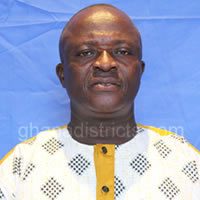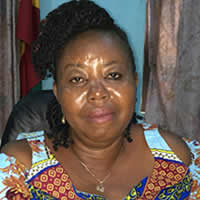Domestic Water
The main potable water facilities in the District are Hand-dug wells and Boreholes. There are a total of 108 Boreholes and 59 Hand-dug Wells in 66 and 26 communities respectively for the two facilities. In addition Mpasatia receives pipe borne water from the Barekese Dam while Nyinahin has a mechanized borehole system.
When the National Water Sector Planning thresholds of 1: 300 and 1: 150 for a borehole and hand-dug well respectively are used, the District could be said to have potable water coverage of about 41.86%. The Socio-Economic Survey revealed that some of the facilities (pumps) are old and inefficient. The population in some communities has also outstripped the installed capacity.
Lack of proper maintenance has resulted in frequent breakdown of facilities resulting in the use of unhygienic sources of water as streams, dug-outs which are potential sources of water-related diseases.
Under the KfW - assisted Rural Water and Sanitation Program –IV, the District will benefit form 60 Boreholes in 29 communities by the end of 2008. The Ashanti Rural Water and Sanitation Program whose preparatory activities have just commenced will provide the District with 200 Boreholes, 2,600 household latrines and 40 institutional latrines.
Development Implications
It is expected that the planned interventions will propel the District to achieve the Millennium Development goal for the sector; the benefits will not last if communities renege on their commitment to the management installed during the projects implementation. Rain harvesting as a potable water technology option needs to be considered in the light of the heavy rainfall in the District.
Sanitation
There is no organized household Waste Management system in the District. Waste water from homes flow into immediate surroundings, open spaces and near- by houses since there are no drains to carry them away. This creates pools that encourage mosquito breeding. Open dumping is the method of solid waste disposal. Community refuse dumps have no scavengers leading to poor management practices at these dumps.
Sanitary facilities in the district are woefully inadequate. The few KVIPs that have been constructed by the Assembly and other stakeholders are inadequate in terms of their number and the population in the communities. They are also poorly maintained leading very their present unsanitary condition.
Even though the District has no excreta management system, the situation is not hopeless as most Communities have been supported by the Assembly to construct pit latrine. In settlements where there are no toilets, residents resort to indiscriminate defecation. The sanitation situation is being addressed through household ventilated pit latrine provision component of RWSP –IV subsidizes 200 households with grants of about GHC 950,000.00 each. The program coverage will be further enhanced with the construction 2,600 additional facilities under the ADB- supported ARWSP.
Development Issues
There is the need to establish a comprehensive sanitation policy to regulate landlords, adoption of sustainable technology option as well as management of public toilet facilities. A sustainable sanitation promotion scheme is needed as the current schemes are project fund dependent.
Housing
As is typical in rural communities in Ghana decent accommodation is scarce in the District. At the inception of the Assembly officers posted to the District failed to report in the District when they became aware of the absence of decent accommodation. The District has therefore started a staff housing scheme for public officers as a means to attract competent staff. In the communities policy to provide housing unit is being pursued through the provision of teachers and nurses living quarters.
Date Created : 11/24/2017 3:11:37 AM






 facebook
facebook twitter
twitter Youtube
Youtube TOLL FREE 0800 430 430
TOLL FREE 0800 430 430 +233 593 831 280
+233 593 831 280 GPS: GE-231-4383
GPS: GE-231-4383 info@ghanadistricts.com
info@ghanadistricts.com Box GP1044, Accra, Ghana
Box GP1044, Accra, Ghana